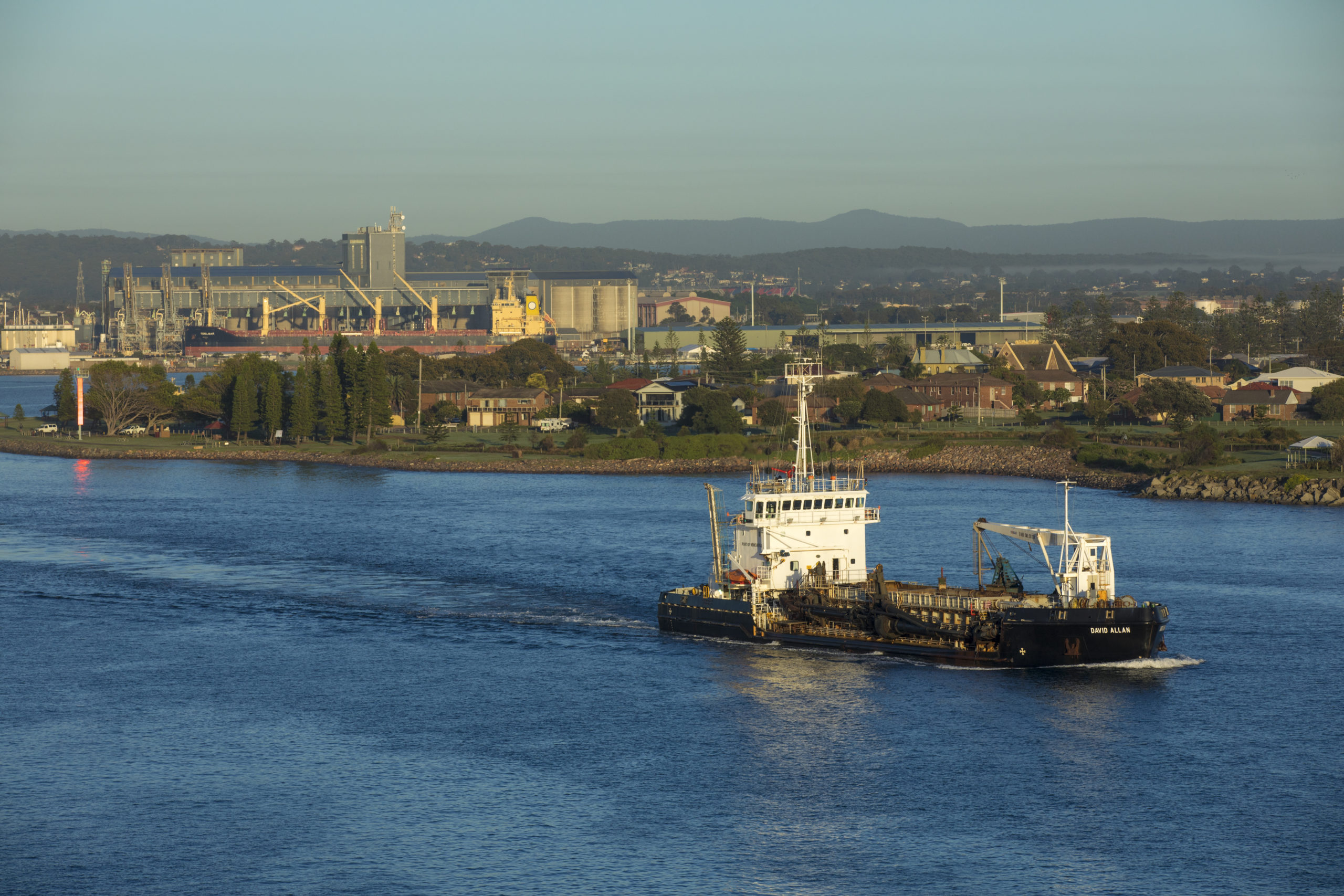
Temporary loading restrictions affecting the largest ships that visit Port of Newcastle have been lifted more than a week faster than the comparable event in 2015 thanks to a rapid and pre-emptive response to the March flooding.
Port of Newcastle activated its survey and dredging response team on 22 March in anticipation that floodwaters would rapidly increase siltation in Newcastle Harbour, threatening port operations.
The port’s full-time trailing suction hopper dredger, David Allan, worked in tandem with a “sweeper” vessel, Pacific Tiger, to target areas of the channel most prone to silt built-up following major flood events.
With the port’s dedicated hydrographic survey team to guide the dredging activities, and in close consultation with Port Authority of New South Wales Harbour Master Vikas Bangia, channel depth was restored to the required level within three weeks.
That enables all ships to load to their maximum draft, with the largest ships continuing to depart with a high tide as normal.
Port of Newcastle Executive Manager Marine & Operations Glen Hayward credited the restoration of operations to the partnership with Port Authority of NSW and the coal terminal operators.
“Safety has been the top priority throughout – we all worked together to minimise the impacts on port operations, taking a risk-based approach that appropriately managed hazards such as debris and freshwater impacts,” Mr Hayward said.
“The port has always relied upon all of the stakeholders to work together – whether to manage flood events or to maximise the entire supply chain – so it is pleasing to see another great result from these collaborative efforts.
“We expect the impact of the flooding will still be felt for a few more weeks with continued discolouration of the water and more silt needing to be helped on its way out to sea.”
Port Authority of NSW Harbour Master Vikas Bangia said the collaboration between port stakeholders greatly reduced potential impacts to port operations and the supply chain.
“The influx of freshwater poured into Newcastle Harbour during the recent floods changed the salinity of the water and made ships much harder to manoeuvre,” Captain Bangia said.
“Our Newcastle operations team collaborated with stakeholders across the port to ensure the safety of shipping and maintain normal operations in conditions that were anything but.
“It was a challenging few weeks but the concerted effort by all involved kept the supply chain moving. They’ve done themselves — and Newcastle — proud.”
Port of Newcastle
Port of Newcastle is a major Australian trade gateway handling 4,600 ship movements and 171 million tonnes of cargo each year. With its annual trade worth about $25 billion to the New South Wales economy, the Port enables businesses across the state to successfully compete in international markets. With a deepwater shipping channel operating at 50% of its capacity, significant port land available and enviable access to national rail and road infrastructure, Port of Newcastle is positioned to further underpin the prosperity of the Hunter, NSW and Australia. As custodians of the region’s critical asset, Port of Newcastle is diversifying its trade as it strives to create a safe, sustainable and environmentally and socially responsible Port that realises its potential.
